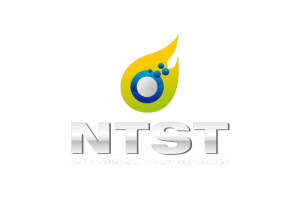
Latest NTST News:
New Hi-Tech Coatings:
Aluminum Nitride (AlN)
Boron Carbide (B4C)
Cubic Boron Nitride (c-BN)
Hex Boron Nitride (h-BN)
Chromium Nitride (CrN)
Fire Prevention
Porcelain
Silicon Carbide (SiC)
Silicon Nitride (Si3N4)
Tantalum Nitride (TaN)
Thermal Protection Systems Titanium Diboride (TiB2)
Titanium Nitride (TiN)
Zirconium Nitride (ZrN)
Download product bulletins at the "DOWNLOADABLE BROCHURES" section to the right >>>>>>
Download the "New NTST Coatings" Brochure for a short description of our newest products.
Need more technical information?
Click on the PRODUCTS tab above
Contact Information
call:
702-449-2154 Dominic
702-978-0151 Ron Kostick
email:
dominic@nevadathermalspray.com
or click for:
Nevada Thermal Spray Tech.
4842 Judson Avenue, Suite 115
Las Vegas, NV 89115
Thermal spray coatings are
used in over 50 industries
Air Plasma Spray (APS) Process
The APS process can obtain high deposition rates and the capability to spray varied geometries. Plasma spraying also allows composition control and can produce coatings with high mechanical strength and durability.
In the plasma spraying process, a high intensity arc is operated between a stick-type cathode and a nozzle-shaped water-cooled anode. Gas is introduced along the cathode, is heated by the arc to plasma temperatures and then exits the anode nozzle as a plasma jet. Powder injected into the plasma jet is accelerated and heated to a molten state. As the molten particles in the jet strike the selected substrate, they form splats that build up, particle by particle, into a coating.
Among the many spraying parameters, the spray distance, powder size distribution, power level, and arc gas selection strongly influence the microstructure of coatings. The particle temperature at substrate impact is governed primarily by the enthalpy of the gas stream and the residence time of the particle. Since enthalpy is an indication of the amount of energy in the plasma stream, increases in electrical power result in an increase in enthalpy. Thus, the molten state of the particles can be dictated by proper selection of the gases and power levels used. The particle velocity at substrate impact is governed by the plasma velocity and density, which are dependent on the type and volume of the gases being used and the energy being input to the gases. Figure 1 illustrates the typical APS equipment setup. Figure 2 illustrates an APS glass roll application.
Figure 1 Typical APS equipment setup
Figure 2. Glass roll coated with NTST's super alloy using APS



